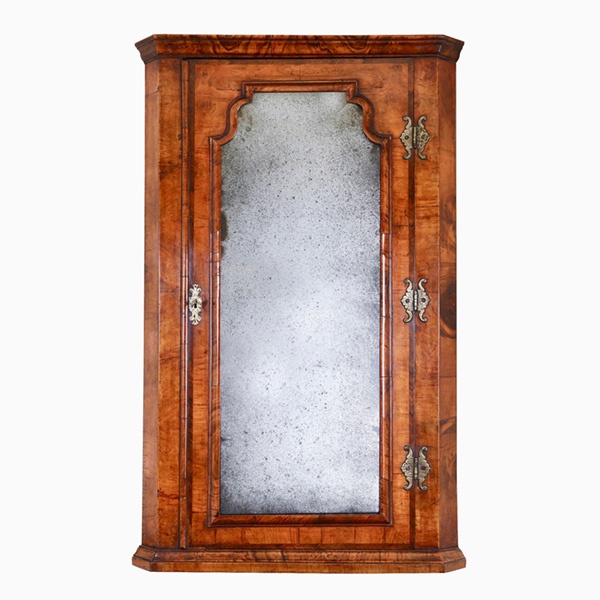Important 17th Century Charles II Burr Walnut Coffre Fort Strong Box, Circa 1675
Sold
Request Information
Follow Us
Important 17th Century Charles II Burr Walnut Coffre Fort Strong Box, Circa 1675
A rare and important 17th-century Charles II burr walnut coffre fort adorned in highly decorative gilt brass mounts and strapwork concealing six secret compartments.
Attributed to the Royal cabinetmaker, Gerrit Jensen. Circa 1675, England.
Decorated entirely in the finest burr walnut veneers and adorned with highly decorative thick foliate gilt brass mounts and strapwork, this is one of the finest examples to be discovered and should be noted as the benchmark for all coffre forts of the entire 17th century. Every single detail in this example exceeds in quality.
The large elaborate gilt brass clasp opens on a push-spring release to reveal the crossbanded interior lined in cascading book-matched figured walnut with two drop-down compartments, each concealing its original hidden box.
Open the original brass bolt lock to open the fall. Once the fall is open you will find two short drawers lined in fiddleback walnut retaining what appears to be the original silk pulls. To access the secret boxes you must first remove the drawers. You can then slide out a small mitred piece situated above each drawer and the original boxes will drop down from each side. The central drawer division can also be removed revealing a secret compartment accessed from the back by sliding a small dovetail-housed piece of oak, after removing this, you can slide down a section of the interior to reveal the most hidden of the six secret boxes.
Gerrit Jensen. Jensen’s earliest recorded customer was Charles Stuart, 3rd Duke of Richmond, who in October 1672 paid him £10 for a table, stands and a strongbox.
Gerrit Jensen supplied a walnut-veneered ‘strongbox’ to Colonel James Grahame in 1688, Levens Hall. Levens Hall, Cumbria. A walnut and iron-bound strongbox still at the house was supplied in 1688.
The present example relates to a strongbox held at Ham House, Surrey. National Trust Collection: NT 1139751.1 According to Thornton and Tomlin, this strongbox could be one of the two described in the inventory of 1683, in the Duchess’s Bedchamber.
Thornton and Tomlin 1980 Peter Thornton, and Maurice Tomlin. “The Furnishing and Decoration of Ham House.” Furniture History, The Journal of The Furniture History Society Vol.XVI, 1980, fig 68
Museum Grade.
Condition
Good. Wear consistent with age and use. Superb original condition. Fabulous colour and patination to the original surfaces.
Dimensions
Height: 32.5 cm (12.8 in)
Width: 51 cm (20.08 in)
Depth: 39 cm (15.36 in)
PREVIOUSLY SOLD
No Results Found
The page you requested could not be found. Try refining your search, or use the navigation above to locate the post.
No Results Found
The page you requested could not be found. Try refining your search, or use the navigation above to locate the post.
YOU MAY ALSO LIKE

Queen Anne Walnut Corner Cupboard with Bevelled Mirror Plate
A truly remarkable find in original condition. To the door a shaped soft bevelled mirror plate is framed by a cross-grain molding of typical queen Anne design which is further cross-banded, feather-banded and edged to the opening with a single de-molding.

Queen Anne Walnut Corner Cupboard with Bevelled Mirror Plate
A truly remarkable find in original condition. To the door a shaped soft bevelled mirror plate is framed by a cross-grain molding of typical queen Anne design which is further cross-banded, feather-banded and edged to the opening with a single de-molding.



















